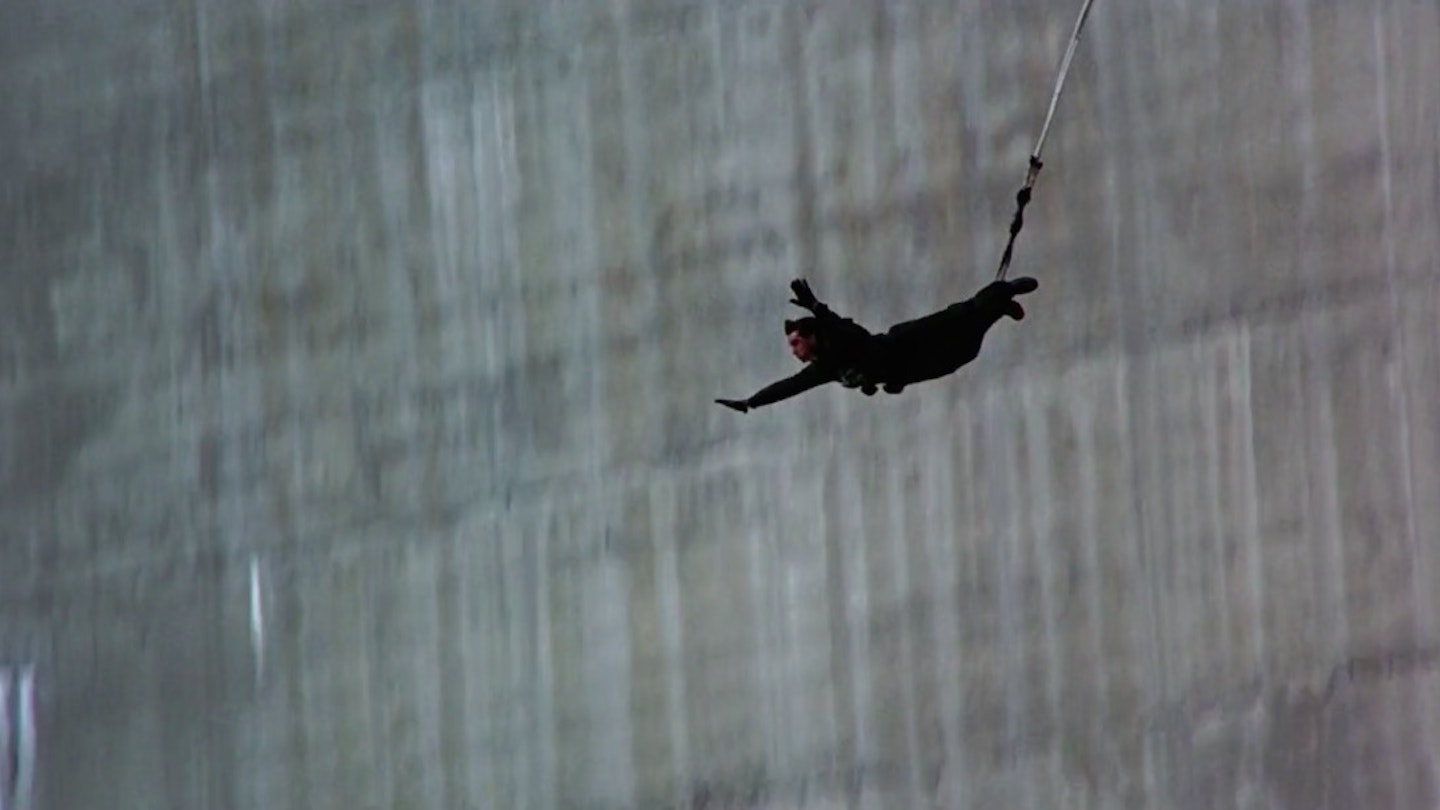Spectre is still in cinemas worldwide, but lest we forget, this week also marks the 20th anniversary of GoldenEye. Pierce Brosnan's debut as 007 arrived after the longest ever gap between James Bond films: six years had passed since Timothy Dalton had brandished his Walther PPK for Licence To Kill in 1989. GoldenEye's opening sequence had a lot of work to do in immediately re-establishing the franchise as a going concern for the '90s. What follows is the definitive history of the most important ten minutes in Bond's career.
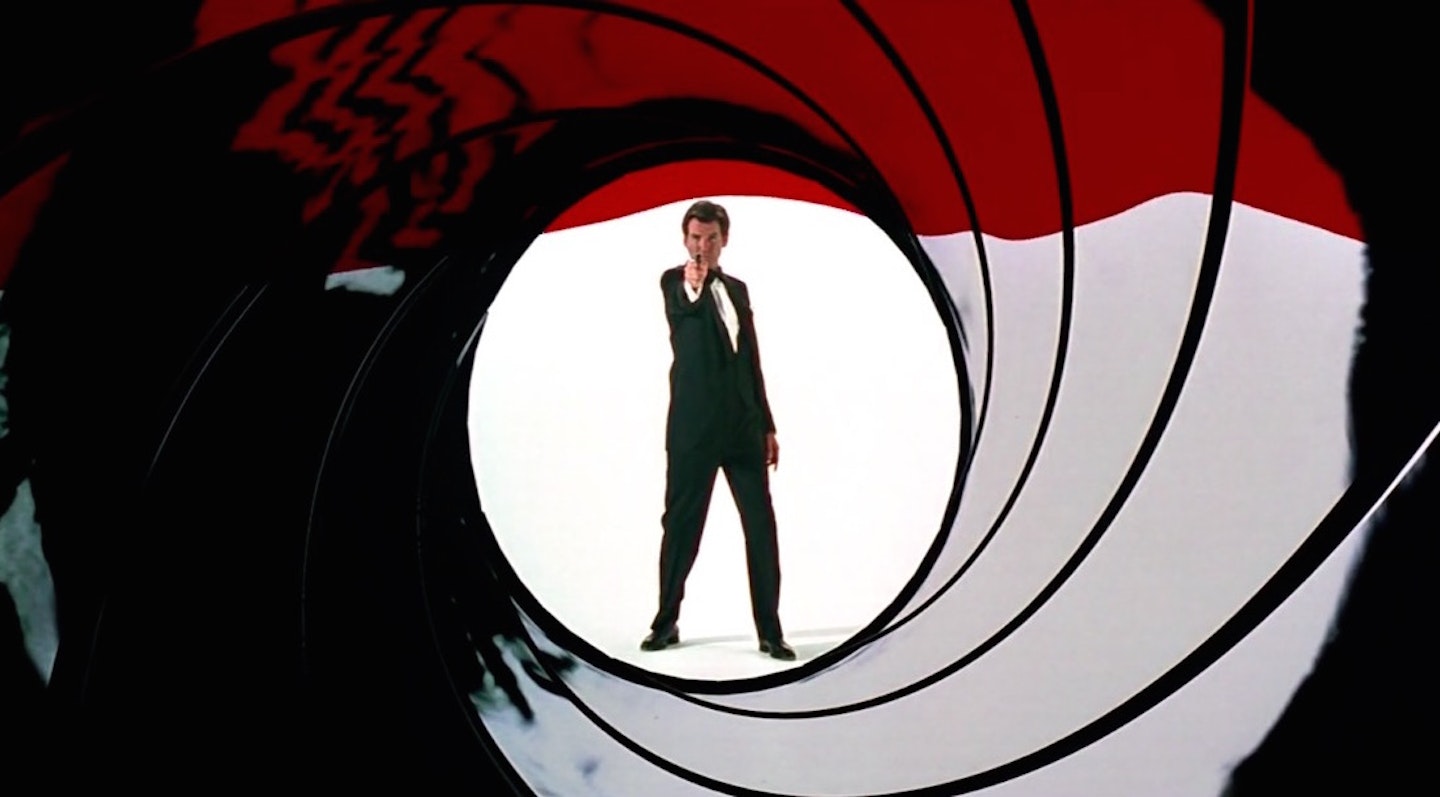
THE BEGINNING
MARTIN CAMPBELL (DIRECTOR): I remember that there was a lot of bad press, because there’d been such a long gap since Dalton’s films. Plus, they had been considered a low in terms of the Bond franchise. Everyone was feeling that it might be over. There were things in the press about its being past its sell-by date, and finished, and a relic, and not relevant to the 1990s, and all that sort of shit.
BARBARA BROCOLLI (PRODUCER): There was a lot of ‘Does the world need James Bond?’ The Berlin Wall had come down and the Soviet Union had broken up. Our feeling was that all that made the world even more dangerous! Good and evil became blurred. The main story of that film was “What is going to happen now?” Of course, things got pretty bad. So I think Pierce’s Bond reflected the changing world order and the need, more so than ever, for heroic endeavour.
CAMPBELL: We had $55m to produce the movie, which was extraordinarily low, so there was financial pressure. But we had a terrific new Bond…
PIERCE BROSNAN (JAMES BOND): People said, "The cold war is over, who's he going to fight?" Well, you're always going to have bad guys. You don't need a cold war to make James Bond fly. They kind of met on the landscape back in the 60s, and that was the shit that was going on. But he was a spy. Spies still exist. MI6 and the CIA still exist. Countries still have secrets.
CHRIS CORBOULD (FX SUPERVISOR): We all felt that this could be the end of the Bond franchise if we didn’t get it right. During that lay-off there had been some extraordinary films. I thought the stuff they did in True Lies was mind-blowing, for example. Films like that really upped the ante for Bond. It was crucial to make this a fantastic Bond film, otherwise it was going to fade into oblivion.
PETER LAMONT (PRODUCTION DESIGNER/VETERAN OF 18 BOND FILMS): Martin Campbell asked me what my last film was. I said True Lies and he just went white. From then on it was never in question that I’d be production designer. It’s funny, everyone always assumes that Jim Cameron and I talked at length about the Bond films, but the truth is we never mentioned them!
CAMPBELL: We had to have those sorts of films in mind. Jim Cameron, who’s a master of action, was always at the cutting edge of this stuff, and you’re always looking at it thinking you’ve got to at least be as good as that, even though perhaps you don’t have the same budget. We were always looking over our shoulder.
CORBOULD: So the opening sequence was all part of that. Everybody put 150% into it. We were desperate that it was going be good.
THE DAM
CAMPBELL: Bond is traditionally known for doing action sequences that people haven’t seen before. I wrote that sequence, and plotted and storyboarded it, although it was actually shot by the second unit. It had to be really something, and dizzying height is always a fantastic element. I always remember the one with the marvellous ski-jump in a single shot [The Spy Who Loved Me, 1977]. That’s probably the most extraordinary stunt in any of the Bond films.
LAMONT: I’d used the Kolnbrein Dam for The Boys From Brazil. It’s the tallest dam in Austria, but the problem is it’s so wide it doesn’t look high! But the Verzasca Dam in Switzerland is in a cutting, so although it isn’t as deep, when you get down to the bottom it’s so narrow that it looks terrifyingly high. So we shot it there.
BROCOLLI: That stunt was done for real by Wayne Michaels. I think at the time it broke the record for the biggest fall of all time.
WAYNE MICHAELS (STUNT MAN): This dam was awe-inspiring! People would walk along the top in absolute silence and tentatively peer over. Basically, this had never been done before, and because of that there were an untold number of things that could go wrong. There was a trauma clinic ready and an emergency helicopter to rush me to hospital. The vision that sticks in my mind is standing up there, all the cameras were up to speed and the assistant’s just about to give me “Action”. I could see out of the corner of my eye this little Italian crane driver, who looked pale with fright at the thought of what I was doing. And just as I was about to go he did the sign of the crucifix!
CAMPBELL: It was take one. That’s one of the many amazing things about that jump. He did it in one take, and it’s all for real. The jump is as you see it.
BROCOLLI: When the cord tugged, Wayne momentarily passed out and he managed to pull the gun out just before he did. It was a pretty amazing jump.
MICHAELS: You left the top of the dam and you were just like a twig, a piece of paper. You just got blown all over the place and it was very hard to hold the position. I got to the end of the rope and they could hear me go “uurgh”, which echoed down the valley. The force was so great on me that, physically, it hit me quite badly. Then to actually have to take this gun out and get it in shot in a matter of milliseconds was quite hard work! People ask me what I was thinking of as I took off from that dam, and the vision I had was Martin screaming at me if I hadn’t got this gun out! My mind was made up. I didn’t care: whatever happened, I was going to get this damn gun out!
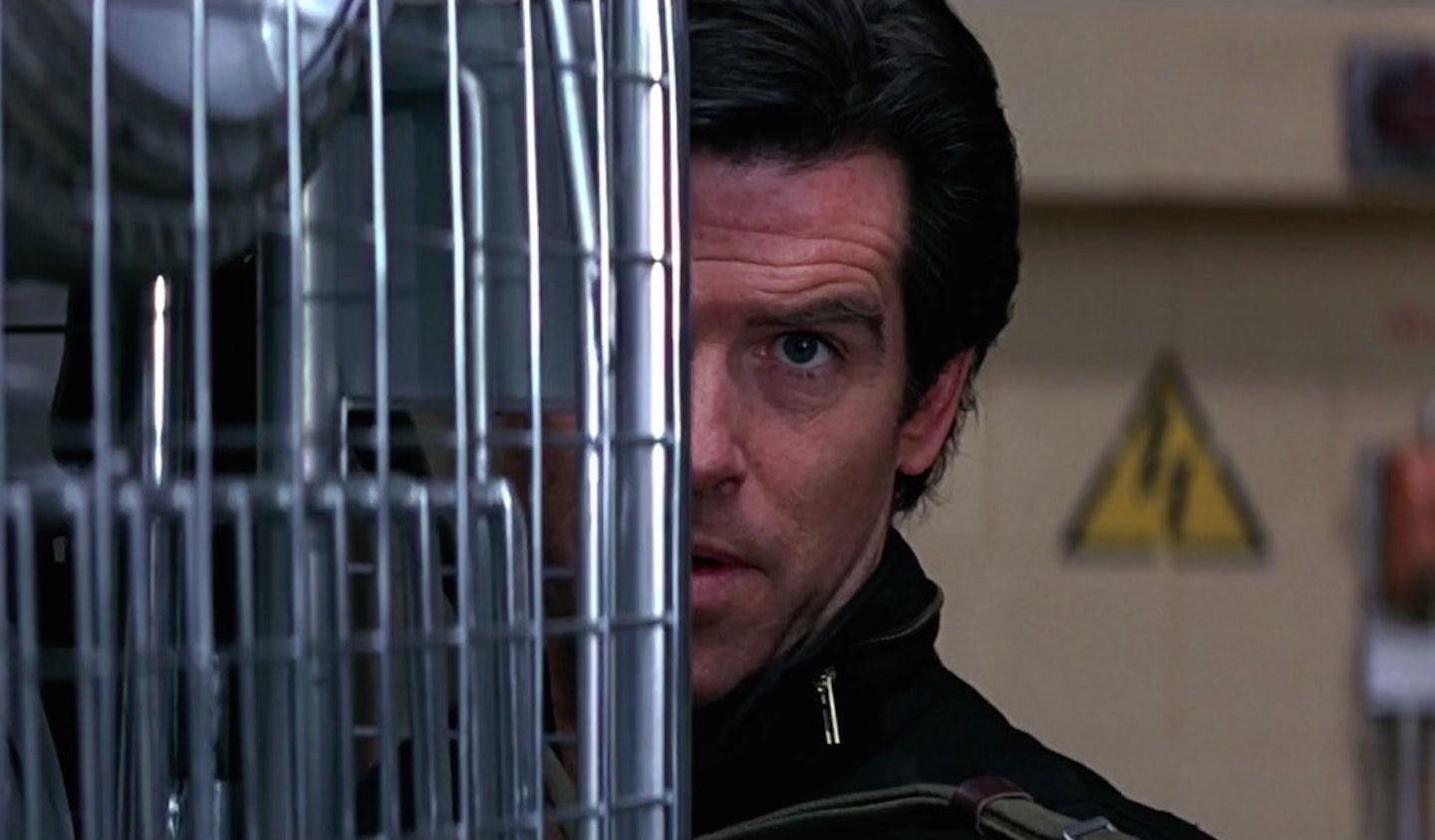
THE GAS PLANT
LAMONT: At that time we had a lot of problems at Pinewood. First Knight was there, and we just kept getting pushed back, so eventually we decided to go and find somewhere else. And we ended up at the Rolls Royce site at Leavesden. We converted four of the old factory interiors to stages, and there was a big outside space. The runway was there already, because they built Mosquitoes there during the war. The Harry Potter ride is on it now!
SEAN BEAN (ALEC TREVELYAN/006/JANUS): It was an unlikely place to think about filming in really. It’s quite a boring area and a dull building. But the sets were great.
BROSNAN: There were no ghosts there: no ghosts of the 1960s, or of Sean Connery or Roger Moore. It was a fresh, clean slate.
CAMPBELL: I thought introducing the new Bond in a very unflattering sort of way – upside down, in a toilet – would be good, because it has a sense of humour about it. I was surprised the producers went along with it!
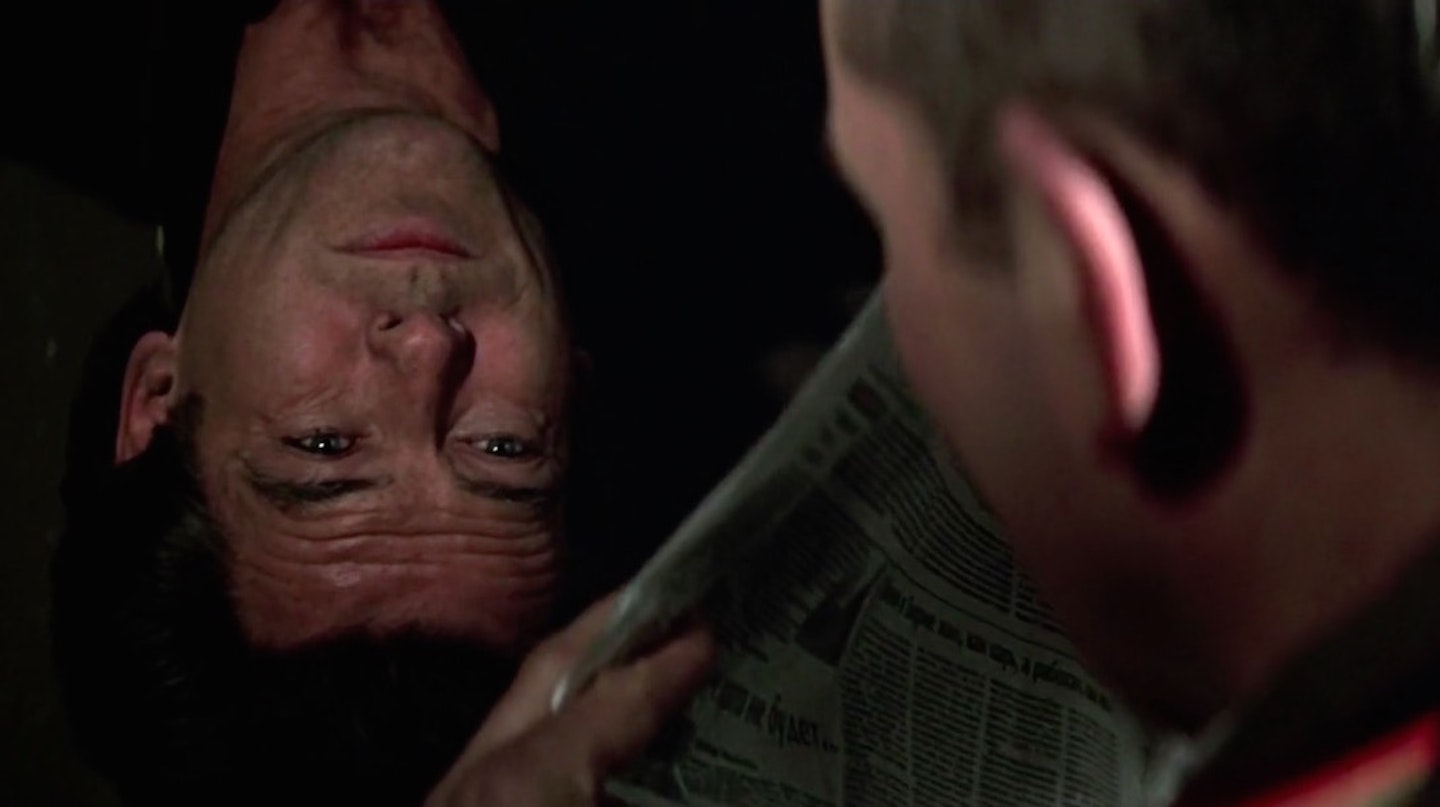
BROCOLLI: You see the character of Bond, he does this extraordinary jump and then you see Pierce in an unusual way. That tickled Martin!
BEAN: On the first day, I had my gun and I had to turn a corner and shoot two guys dead... I thought, “This is great! I’m making a Bond film!” It lived up to expectations. Your first day on a Bond set, doing that. And it was all like that. You’re just like a kid. You grow up watching Bond on TV and you never imagine that one day you’ll be in it. I remember the first day in my dressing room, putting my black shirt on and all the military gear. It was genuinely an exciting experience: one that stands out.

CAMPBELL: The thinking was that Alec had to be someone who is believable as a potential 00, and Sean had actually been talked about for Bond at various times.
BEAN: I was a bit of a long-shot for Bond, but at least I played 006. I can’t play Bond now – I’ve ruled myself out!
CAMPBELL: I really love that awful sequence where Bond’s hiding behind the trolley, and you just hear the squeak of the wheels. There’s no music or anything – it’s just the silence and the squeaking. I actually pinched a moment out of Sam Peckinpah’s The Wild Bunch for that. There’s that bit where Holden and everybody have the wagonload of dynamite, and one of the enemy soldiers gets very nervous and fires a shot, and his commander just blasts him. I took that. Sometimes you need a good moment of shock in a sequence like that.
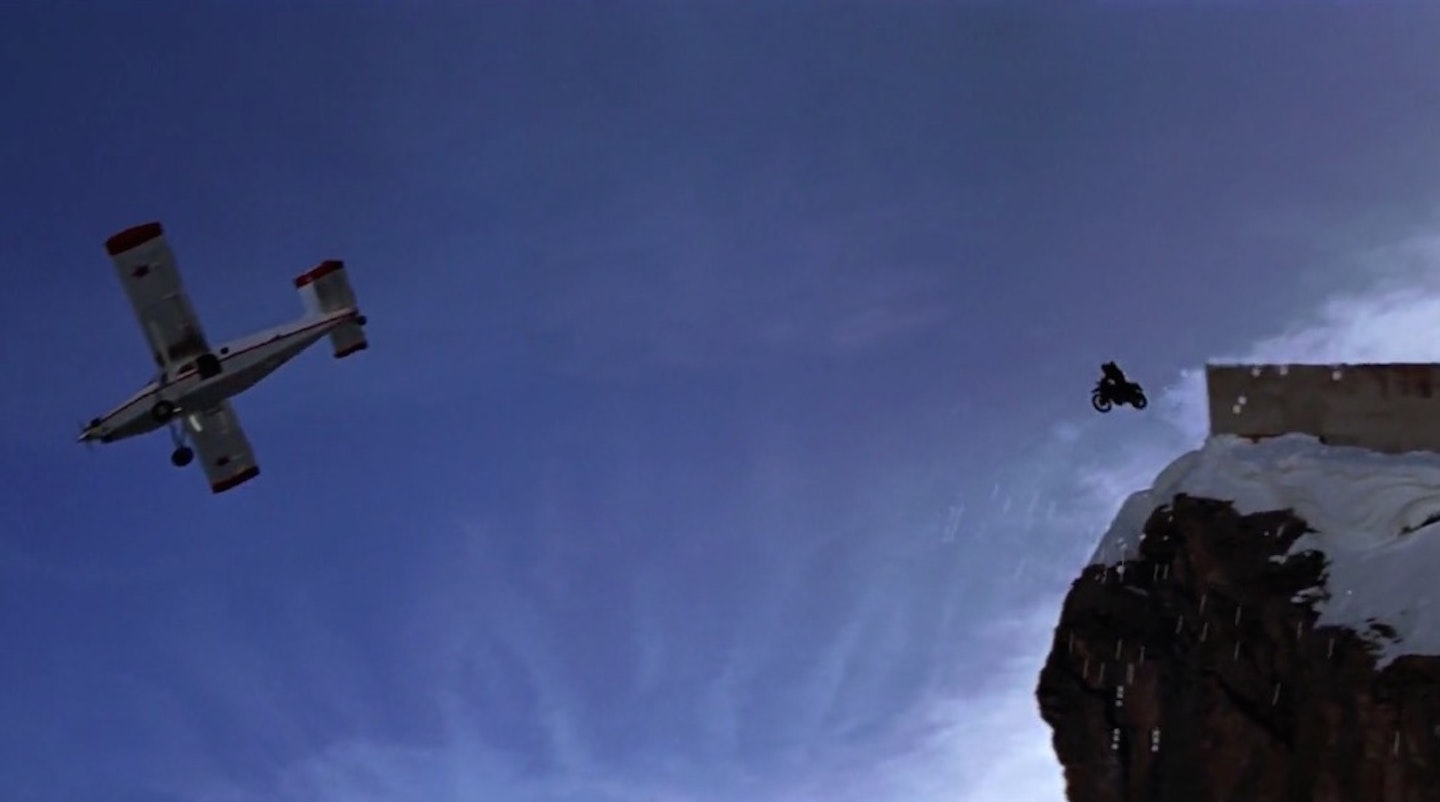
THE PLANE
LAMONT: There was an amazing glass shot that Derek Meddings did, of the mountains. We shot down on to the runway. They built a model and we photographed the model, and then cut away where the runway was, so when you saw the runway it was the real thing with the plane running up. It was all done that way. There was hardly any digital stuff in those days. That was real filmmaking!
MICHAEL G WILSON (PRODUCER): The motorcycle jump was again done in Switzerland. We built the ramp in the fall, and then we had to wait until it snowed. We had Jacques Malnuit go off on his motorbike and open his parachute. We did that for real. Every time they had just enough petrol in the tank so they’d literally run out of gas when they ran off, for ecological reasons because they didn’t want to damage the environment. Then in the spring, when the thaw came, we went down and retrieved all the motorbike parts. That stunt started in the fall with building the ramp and ended in the spring with picking up the pieces.
CAMPBELL: I think Jacques went over that 6000 foot drop or whatever it was about seven times. What a ridiculous job! That whole sequence was about putting Bond in a situation where you wonder how he can possibly escape. There’s a bloody cliff at the end of the runway, so what the fuck does he do? That’s the thing. Put him in impossible situations all the time. I did have concerns that skydiving into a crashing plane was going too far, to be honest, but we actually considered doing it for real at one point.
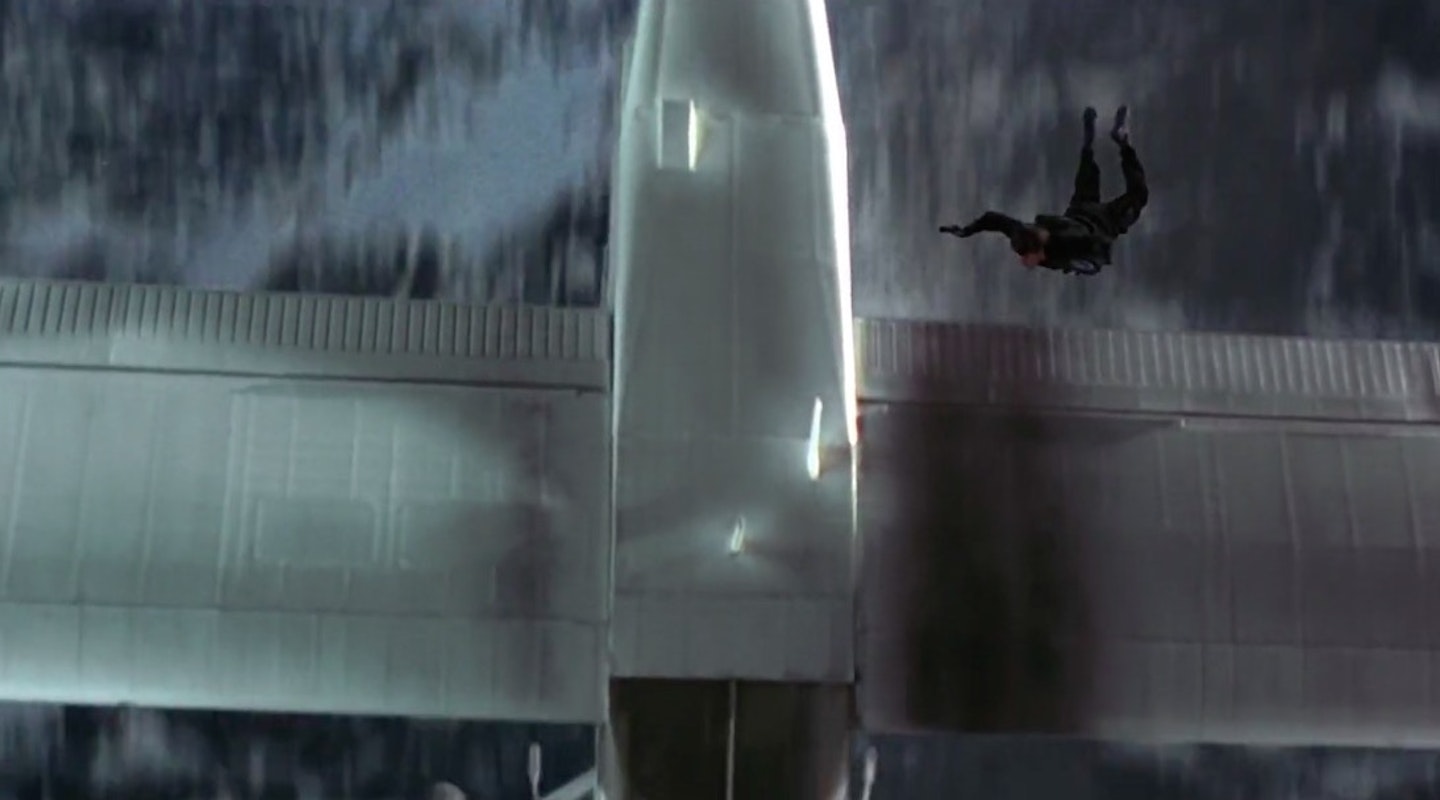
CORBOULD: Everybody thought it was it was unbelievable, but in actual fact it was possible for that particular type of plane. I remember it was a Pilatus Porter, and they could feather the blades or something, to actually get it down into a really slow speed. So, in theory, he could have got in.
CAMPBELL: We worked out that if you put a reverse prop on that plane, and you had enough drop, you could actually achieve that stunt. But that rapidly went out the window! It is pushing believability to the limit...
CORBOULD: The shot where he comes in the doorway is on wires... it’s probably not our finest moment, that one.
LAMONT: The destruction of the facility is a very small miniature. It’s shown quite a long way away. Derek Meddings did that. He did some great stuff. You have to be careful with the way you shoot miniatures, so that the flames don’t look too big. But Derek had worked for a long time on Thunderbirds, blowing stuff up! His best models were dead simple.
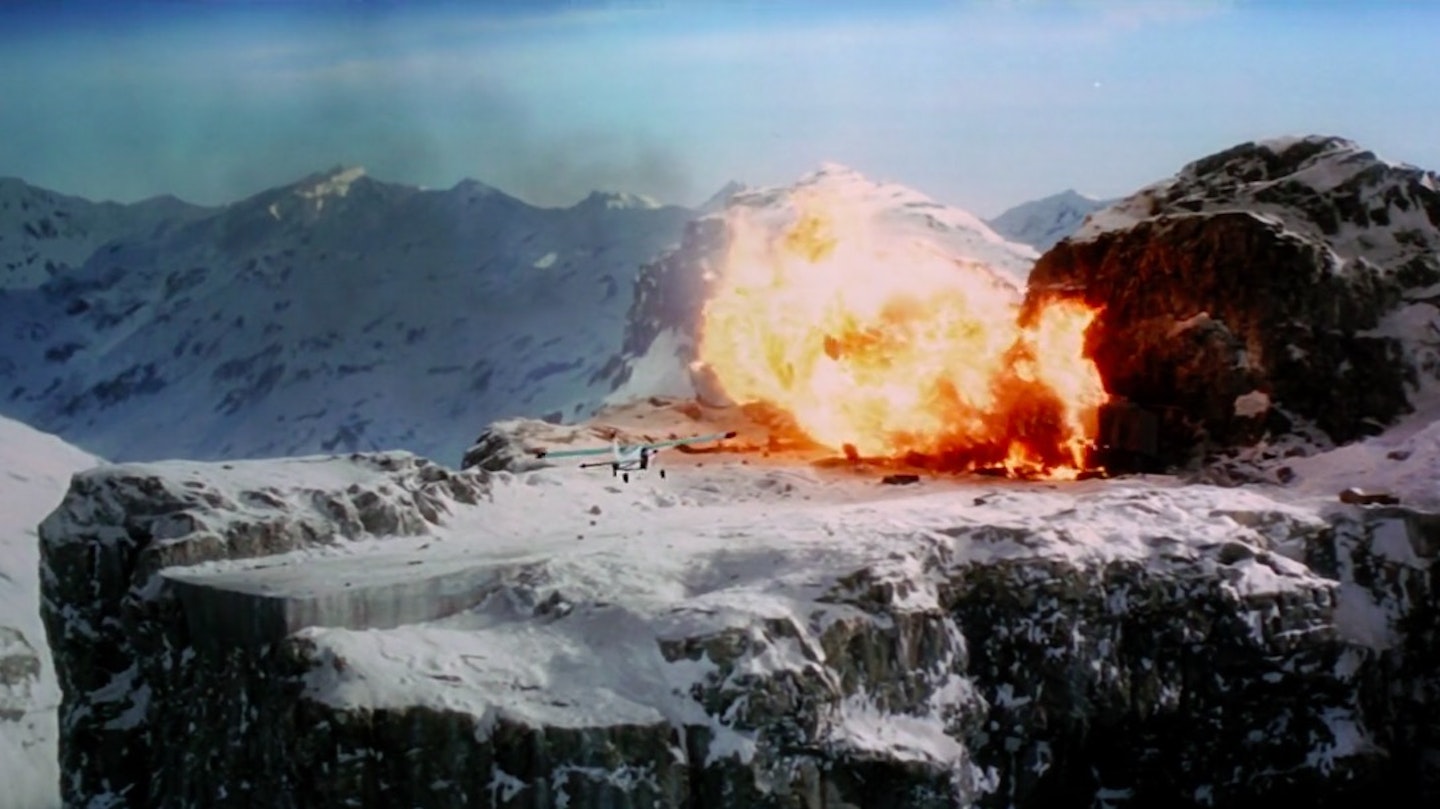
THE RESULT
WILSON: It was pieced together over a long period of time but when it came together it was fantastic.
CAMPBELL: I never thought of the super-heroics in terms of undoing the more 'realistic' thing that Licence To Kill had attempted. We just wanted to keep what’s great about Bond: the stunts and the humour. Bond has been successful for 40 years, so it’s obviously always got something right. It got just about everything right! So why fuck with it?
